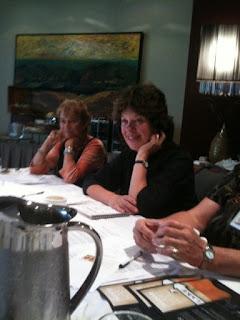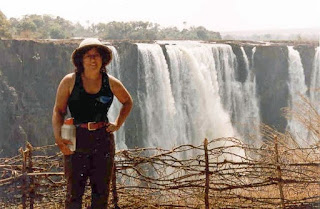There are only 150 people left in the world.
I know - it's difficult. But try to picture it. Got it? Now hold it...
Now imagine those people live spread out in a wild environment, without any way to travel other than by walking. And imagine they have great difficulty in "hooking up" in order to mate and eventually produce offspring.
It really challenges the mind to think of humans in those terms, since there are 7 billion of us on the planet.
But that may help you empathize with the plight of the kakapo parrot of New Zealand. There are less than 150 of these parrots remaining on the planet. They are on the brink of extinction.
They are flightless. They are the heaviest parrot in the world. They are possibly the oldest living bird still on the planet. But the clock is ticking for this bird.
 |
| Kakapo parrot (Photo by Kakapo recovery) |
I first learned about the dire situation this bird is in during a Parrot Lover's Cruise. This is a program put together by the World Parrot Trust and Carol Cipriano, a U.S.-based travel agent, that essentially builds a program around existing cruise ship schedules to allow travellers who opt into the tour to see parrots in the wild and attend seminars about parrot conservation and education on board the ship between ports of call.
Being a parrot lover, I was aware of this bird long before I took the cruise - I just had no idea how close it was to extinction before watching "The Unnatural History of the Kakapo" video about it as part of the tour.
Now our cruise - which was through the Caribbean - did not take us to New Zealand. However, it did take us to several islands where other parrots also face extinction: Puerto Rico, Dominica and Bonaire. All three of those islands currently have ongoing conservation projects to help save the endemic parrot species from extinction. (Not every island stop on our route featured parrots; but on the islands that did not include a parrot element, we used our time to go paddling or hiking, instead).
Any parrot population found on an island - particularly if it is only on one island - is very susceptible to extinction. One bad hurricane, an epidemic of disease, a sudden loss of species-specific habitat, introduction of a predator not native to the area - or a combination of all of them - can decimate a population concentrated in only one spot.
Any parrot population found on an island - particularly if it is only on one island - is very susceptible to extinction. One bad hurricane, an epidemic of disease, a sudden loss of species-specific habitat, introduction of a predator not native to the area - or a combination of all of them - can decimate a population concentrated in only one spot.
The reasons for its decline to a mere 18 birds in the 1970s is a result of several pressures on the population. The Kakapo Recovery Project consists of a team of dedicated conservationists working to restore the population to a level where it can thrive and exist without coming so close to extinction.
 |
| Kakapo plushies. (Photo by Kakapo Recovery) |
Now obviously, you don't physically adopt a bird - but your donation goes toward helping the project continue.
There are different donation levels, and with each one, part of your "gift" includes a plush stuffed kakapo parrot.
Because it is close to Christmas, they will email donors a certificate of adoption so you can present that to a recipient, since at this point, a plushie may not arrive on time for Dec. 25, depending on where you are, in the world.
If you visit the project's website, you can find other ways to help make it a Merry Christmas for kakapos.





















